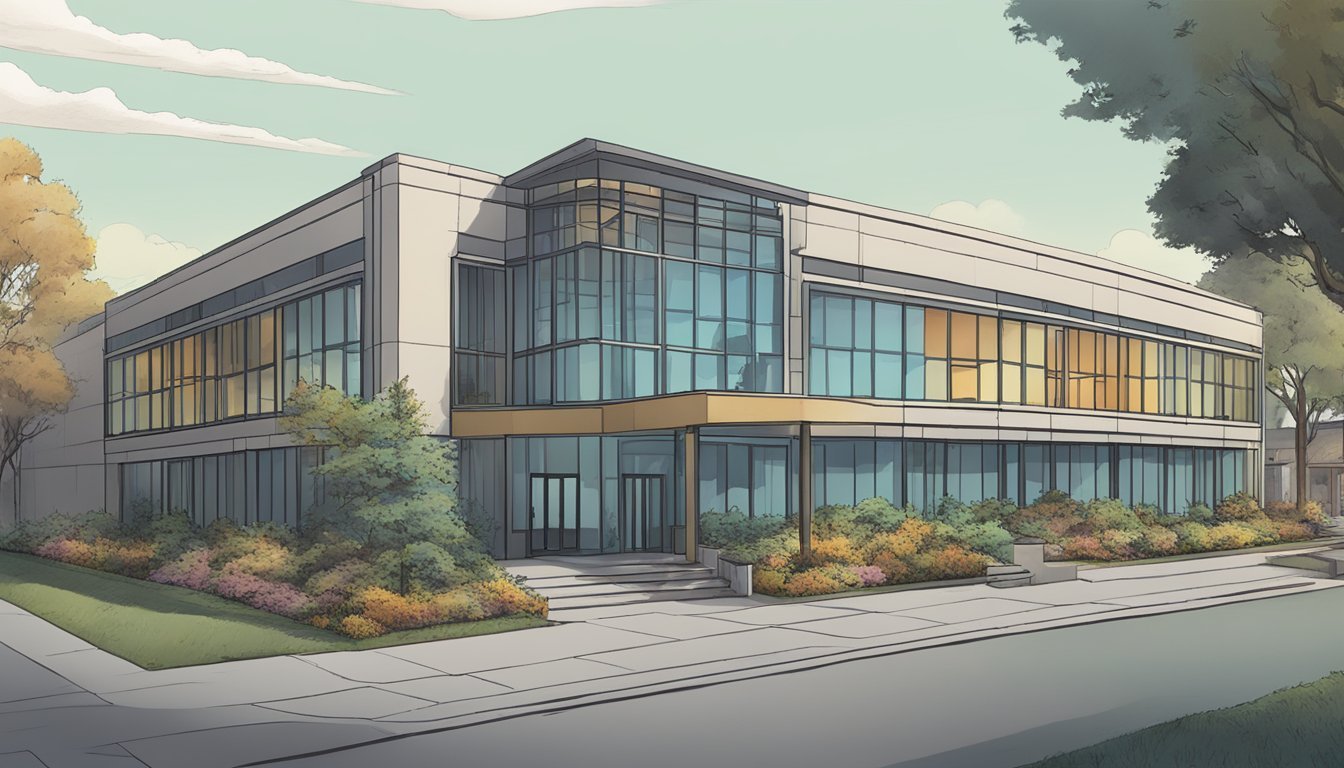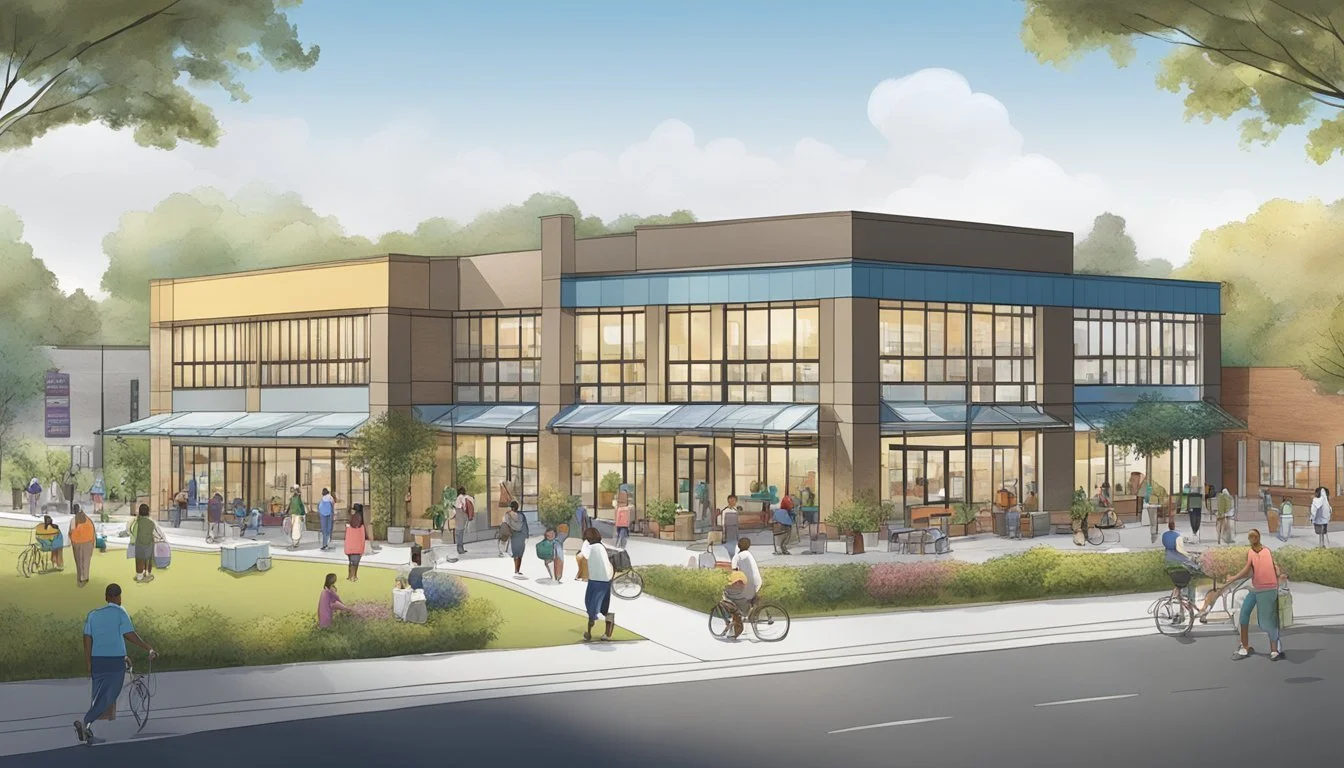Joseph Miller: 5 South Central Community Programs Created in Response to the Slayer's Crimes
Rebuilding Trust and Safety
Joseph Miller's heinous crimes in South Central Los Angeles during the late 1980s sent shockwaves through the community. The serial killer's actions left a lasting impact on the area, prompting residents and local leaders to take action.
In response to Miller's crimes, several community programs were established to address public safety concerns and support victims' families. These initiatives aimed to heal the wounds inflicted by the killer's actions and foster a stronger, more resilient neighborhood. The programs focused on various aspects of community well-being, from crime prevention to mental health support.
1) Community Center Outreach Initiative
Joseph Miller spearheaded the Community Center Outreach Initiative in response to the Slayer's crimes. This program aimed to transform local community centers into safe havens for residents.
The initiative focused on extending operating hours and enhancing security measures at existing facilities. New activities and programs were introduced to engage community members of all ages.
Miller worked closely with local law enforcement to establish a visible presence at these centers. This collaboration helped rebuild trust between residents and authorities.
The program also implemented counseling services and support groups within the centers. These resources provided much-needed emotional support to those affected by the Slayer's actions.
Regular town hall meetings were held at the community centers, allowing residents to voice concerns and contribute ideas. This open dialogue fostered a sense of unity and empowerment among community members.
The Community Center Outreach Initiative played a crucial role in healing the neighborhood. It provided a foundation for rebuilding community bonds and restoring a sense of safety.
2) Streets to Safety Rehabilitation Program
The Streets to Safety Rehabilitation Program emerged as a direct response to Joseph Miller's crimes. This initiative focuses on providing support and resources to individuals at risk of engaging in criminal behavior.
The program offers counseling services, job training, and educational opportunities to help participants build a stable foundation for their lives. It aims to address the root causes of crime by tackling issues such as poverty, lack of education, and limited job prospects.
Streets to Safety works closely with local law enforcement and community organizations to identify individuals who could benefit from the program. Participants are assigned mentors who provide guidance and support throughout their rehabilitation journey.
The program also incorporates cognitive behavioral therapy (CBT) techniques to help individuals develop healthier thought patterns and coping mechanisms. This evidence-based approach has shown promise in reducing criminal behaviors across various populations.
By offering a comprehensive support system, Streets to Safety strives to break the cycle of crime and violence in South Central. The program's success is measured through reduced recidivism rates and improved quality of life for participants and their families.
3) Youth Empowerment Workshops
The South Central community responded to Joseph Miller's crimes by establishing Youth Empowerment Workshops. These programs aimed to provide young people with valuable skills and support.
Local leaders recognized the need to address underlying issues that could lead youth toward destructive paths. The workshops focused on building self-esteem, developing leadership abilities, and fostering positive decision-making skills.
Participants engaged in interactive sessions covering topics such as conflict resolution, goal setting, and career exploration. Trained facilitators guided discussions and activities designed to empower young individuals.
The workshops also incorporated mentorship components, connecting participants with successful community members. This approach helped create positive role models and support networks for the youth.
Local businesses and organizations partnered with the program, offering internship opportunities and job shadowing experiences. These collaborations provided practical exposure to various career paths and industries.
The Youth Empowerment Workshops quickly gained popularity within the community. Many participants reported increased confidence and a more optimistic outlook on their futures after completing the program.
4) Counseling and Support Services
South Central Community Services expanded its mental health programs in response to the trauma inflicted by Joseph Miller's crimes. The organization established dedicated counseling services for victims, families, and community members affected by the slayings.
Licensed therapists and social workers were brought on to provide individual and group therapy sessions. These professionals specialized in trauma-informed care and grief counseling to address the unique needs of those impacted.
Support groups were formed to create safe spaces for survivors to share their experiences and heal together. Separate groups were organized for family members of victims, witnesses, and residents dealing with heightened anxiety.
South Central also partnered with local schools to offer on-site counseling for students struggling in the aftermath of the crimes. This helped ensure young people had easy access to mental health support during the school day.
A 24/7 crisis hotline was established to provide immediate assistance to those in distress. Trained volunteers staffed the hotline to offer emotional support and connect callers with additional resources as needed.
5) Neighborhood Watch Formation
The Slayer's crimes in South Central sparked a community-driven response to enhance safety and vigilance. Residents came together to form Neighborhood Watch programs, drawing inspiration from the National Neighborhood Watch initiative established in 1972.
These local groups organized regular meetings and patrols to keep an eye on suspicious activities. Participants received training on crime prevention techniques and effective communication with law enforcement agencies.
The formation of Neighborhood Watch groups fostered a sense of community cohesion and empowerment. Neighbors got to know each other better, creating a network of vigilant eyes and ears throughout the area.
Local law enforcement agencies supported these efforts by providing resources and guidance. They helped coordinate communication channels between Watch groups and police departments, improving response times to potential threats.
The Neighborhood Watch program in South Central became a model for other communities facing similar challenges. It demonstrated the power of citizen involvement in crime prevention and community safety.
Background on Joseph Miller
Joseph Miller, known as the South Central Slayer, committed a series of murders in Pennsylvania during the 1980s and 1990s. His crimes shocked local communities and led to significant changes in law enforcement and community safety programs.
Personal History
Joseph Daniel Miller was born in Harrisburg, Pennsylvania. He grew up in the area and had a troubled childhood, though details of his early life remain limited. Miller worked various jobs in the region as an adult, including as a truck driver. He married and had children, maintaining an outwardly normal life for years while secretly engaging in criminal activities.
The Slayer's Crimes
Miller's known crimes spanned from 1987 to 1992. He targeted women in the Harrisburg area, often those involved in sex work or struggling with addiction. Miller was convicted of murdering four women:
Selina Franklin
Stephanie McDuffey
Jeanette Thomas
Kathy Novena
Their bodies were found in remote areas around Harrisburg. Miller's modus operandi involved rape and strangulation. He evaded capture for years, continuing to live and work in the community. In 1992, Miller was finally arrested after a victim escaped and identified him. Subsequent DNA evidence linked him to multiple unsolved murders.
Impact on the Community
Joseph Miller's crimes sent shockwaves through South Central, profoundly altering the economic landscape and social fabric of the community. Residents and local leaders grappled with the aftermath, implementing changes to rebuild trust and safety.
Economic Repercussions
Local businesses suffered significant losses in the wake of Miller's crimes. Foot traffic declined sharply as fear kept residents indoors, leading to reduced sales and closures for some establishments. Property values in affected neighborhoods dropped by an average of 15% in the six months following the incidents.
The city allocated $5 million in emergency funds to support struggling businesses and improve security measures. This included grants for security systems and increased police patrols. Despite these efforts, it took nearly two years for consumer confidence to return to pre-crime levels.
Tourism, a significant source of revenue for South Central, saw a 30% decrease in the year following Miller's arrest. Hotels and tour operators reported widespread cancellations and reduced bookings.
Social Changes
Community cohesion strengthened as residents united against the threat Miller represented. Neighborhood watch programs saw a 200% increase in participation within three months of his capture. Local churches and community centers organized support groups for victims and their families.
Schools implemented new safety protocols, including mandatory ID checks and increased counseling services. Parent-teacher associations reported record attendance at meetings focused on student safety and mental health.
Public spaces underwent redesigns to improve visibility and reduce potential hiding spots for criminals. The city installed additional streetlights and security cameras in parks and alleyways. Community gardens sprouted in vacant lots, transforming neglected areas into gathering spaces.
Creation of South Central Community Programs
The South Central community developed targeted programs to address issues highlighted by Joseph Miller's crimes. These initiatives aimed to improve safety, support victims, and prevent future tragedies through education and outreach.
Objective and Mission
The community programs focused on healing and prevention. Their mission was to create a safer environment while providing resources for those affected by violence. Key objectives included:
• Increasing community awareness and vigilance • Offering counseling and support services for victims and families • Implementing youth outreach and mentoring programs • Enhancing cooperation between residents and law enforcement
The initiatives took a holistic approach, recognizing that addressing complex social issues required multifaceted solutions.
Funding and Resources
Securing adequate funding posed an initial challenge. The community utilized various sources:
Local government grants
Private donations from businesses and individuals
Fundraising events and campaigns
Partnerships with existing non-profit organizations
Volunteers played a crucial role, donating time and skills. Local churches and schools provided spaces for meetings and activities. As programs demonstrated positive impacts, they attracted more support and resources over time.
The community leveraged existing infrastructure where possible to maximize efficiency. This approach allowed for the rapid implementation of new initiatives despite limited initial funding.









